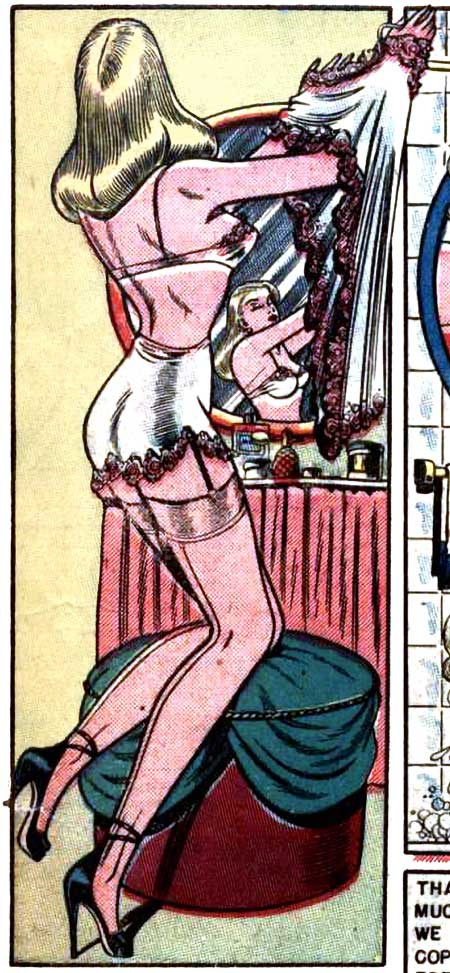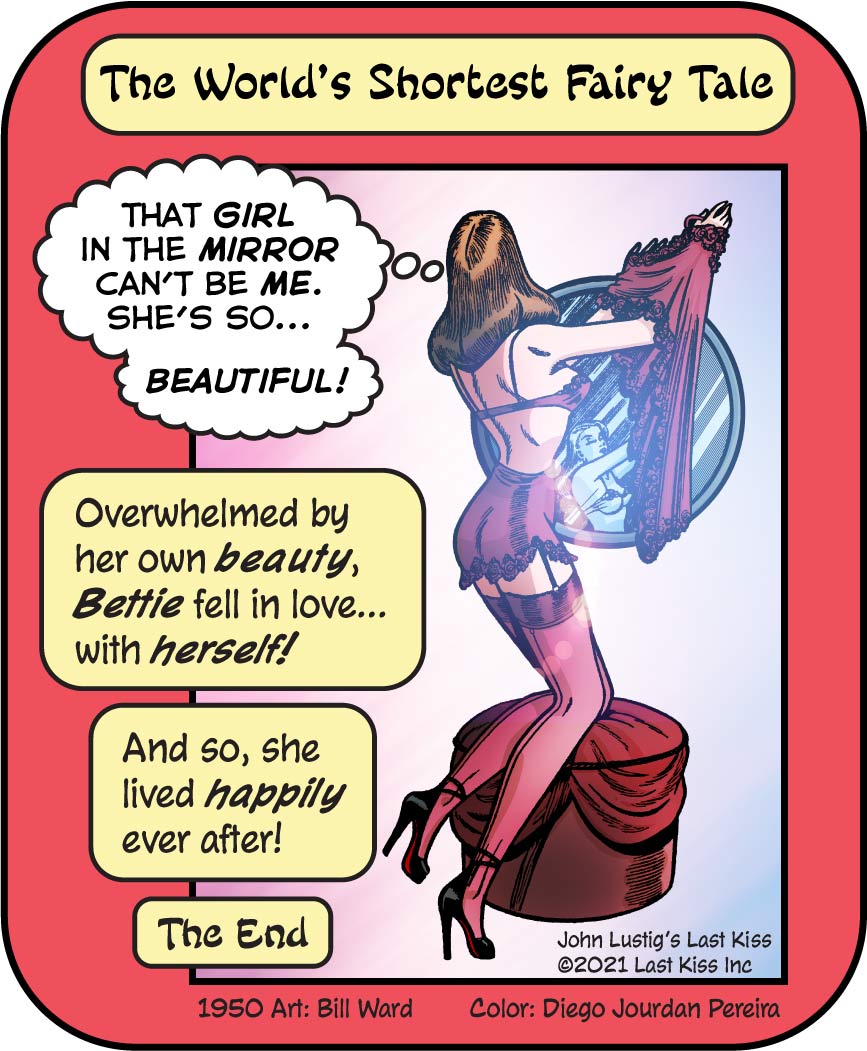
Art by Bill Ward from Torchy #4, May 1950. Quality Comics.
Transcript:
SCENE: A woman in her underwear is getting dressed as she looks in the mirror.
CAPTION: The World’s Shortest Fairy Tale
WOMAN (Thinking): That girl
in the mirror can’t be me. She’s so…beautiful!
CAPTION: Overwhelmed by her own beauty, Bettie fell in love…
with herself! And so, she lived happily ever after! The End
1950 Art: Bill Ward Color: Diego Jourdan Pereira
DJP.lk618
Torchy4_5_1.jpg
↓ Transcript
SCENE: A woman in her underwear is getting dressed as she looks in the mirror.
CAPTION: The World's Shortest Fairy Tale
WOMAN (Thinking): That girl
in the mirror can’t be me. She’s so...beautiful!
CAPTION: Overwhelmed by her own beauty, Bettie fell in love...
with herself! And so, she lived happily ever after! The End
1950 Art: Bill Ward Color: Diego Jourdan Pereira
DJP.lk618
Torchy4_5_1.jpg
CAPTION: The World's Shortest Fairy Tale
WOMAN (Thinking): That girl
in the mirror can’t be me. She’s so...beautiful!
CAPTION: Overwhelmed by her own beauty, Bettie fell in love...
with herself! And so, she lived happily ever after! The End
1950 Art: Bill Ward Color: Diego Jourdan Pereira
DJP.lk618
Torchy4_5_1.jpg



She’s getting ready to go onstage at a local theater production of Gypsy. She can’t sing, she can’t act, she can’t dance but her other talents will suffice. Her sugar daddy got her the part.
1950. Torchy Comics. I wonder if they were approved by the comic book authorities.
Probably not. According to wikipedia:
https://en.wikipedia.org/wiki/Comics_Code_Authority
The Comics Code Authority (CCA) was formed in 1954 by the Comics Magazine Association of America as an alternative to government regulation. The CCA allowed the comic publishers to self-regulate the content of comic books in the United States. The code was voluntary; there was no law requiring its use, although some advertisers and retailers looked to it for reassurance. Some publishers including Dell, Western, and Classics Illustrated never used it. Its code, commonly called “the Comics Code”, lasted until the early 21st century. The CCA formation followed a series of Senate hearings and the publication of psychiatrist Fredric Wertham’s book Seduction of the Innocent.
So Torchy Comics and it’s prurient interest brethren were, quite possibly, the reason for the Senate hearings.
As a boomer I have to say I just love that post WWII era.
The Comics Code Authority was mostly about quashing the gory excesses of the horror comics of the time—most famously and perhaps most gory of which were those published by EC Comics.
Unfortunately, the CCA went on to quash nearly everything that made comics interesting (including sexy artwork) for decades.
I’m never going to get that image out of my head. Thank you!!!